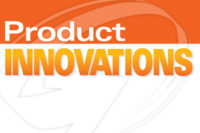Employees inside chemical manufacturing plants are exposed to some of the most unforgiving work conditions in the industrial sector. This is because in such environments, workers are exposed to extreme temperatures, dust, volatile chemicals and invisible, explosive gases.
Common protection methods against explosive risks include containment, segregation and prevention. Out of all the options, explosive containment is the only method that allows an explosion to take place, in a confined and safe manner through the use of explosion proof designs and mechanisms.
Explosion Proof Fixtures (C1D1 and C1D2)
Explosion proof lights support hazardous location ratings that can help operators match the fixtures with the right environment. For chemical manufacturing plants, it is important to utilize luminaries with Class 1 Division 1 and/or Class 1 Division 2 ratings. According to the National Electric Code (NEC Article 501), Class 1 Division 1 hazardous locations refer to facilities where flammable concentrations of dangerous gases, liquid-produced vapors or combustible liquid-produced vapors exist during normal conditions and operations; or many potentially exist due to maintenance, leaks or faulty equipment (mechanical failure), resulting in the creation of ignitable sources. Class 1 Division 2 covers hazardous locations where flammable gases, liquid-produced vapors or combustible liquid-produced vapors are used, manufactured, processed or handled. Such facilities may have preventive measures for storing explosive chemicals, where fatal ignitions could possibly occur from leaks or breakage.
Illumination Requirements
Chemical processing facilities are constantly monitored because most modern plants incorporate automated systems in their workflows to prevent human exposure to dangerous substances. Robust lighting is needed during surveillance and inspection tasks, which requires adequate vertical illumination. For confined spaces, including storage tanks, silos or containers, workers may use explosion proof LED drop lights or flashlights during inspection. The dark, enclosed nature of the hazardous location requires powerful, compact lights that can easily be transported. For cleaning or hose-down sessions, the luminaries may also be corrosion resistant, in order to provide protection against abrasive cleaning agents.
Corrosion resistant lights may contain stainless steel or bronze (with glass housings), and support specific Ingress Protection ratings. The latter, also known as International Protection, dictates the level of tolerance for water or pressure-based exposure. IP66 to IP69k are common standards for corrosive environments. At these ranges, all of the fixtures contain dust-tight designs (complete protection from dust). IP66 provides protection from powerful water jets (12.5 mm nozzle) from any direction. While at the other end of the spectrum, IP69k offers protection from close-range, high temperature water jets during hose-down sessions.
LED Energy Savings
Chemical manufacturing plants that are looking for long-term solutions to lighting systems may want to consider replacing conventional, high intensity discharge lamps with LEDs. By comparison, LEDs promote longer lifespans (up to 50,000+ hours), consume less energy and can withstand harsh treatment from unpredictable environments and rough handling. A recently published case study that features the benefits of replacing outdated fixtures in the chemical manufacturing industry expounds on the advantages of LEDs in industrial settings.
The report uncovered that a Progetti chemical manufacturing facility approved a project that replaced 400-watt high pressure sodium lamps inside the loading area with 60, 113-watt LEDs. Inside the building, 50 fluorescent fixtures (in groups of six) were replaced with 20 luminaries with 60 LEDs and 30 fixtures with 80 LEDs. Currently, the company is saving over 69 percent in annual operating costs from the project. Furthermore, the group was able to reduce its carbonemissions, as well as the frequency of maintenance and repair works on faulty lamps.
Below is a shortlist of LED lights carried by Larson Electronics:
- Explosion proof LED light tower (C1D1, 300 watts, 100-foot cord with EXP plug)
- Explosion proof LED string lights (C1/2D1/2, 50 watts, five hand lamps)
- Explosion proof LED two-color light (C1/2/3D1/2, 20 watts, T3C temperature rating)
- Low voltage LED fixture (C1D2, 31 watts, IP66 ingress protection)
- Hazardous area LED strobe light (C1D2, 10 watts, four flashes per second)
- Explosion proof LED quadpod (C1D1 Group B Hydrogen, 150 watts, 100-foot SOOW cord)






